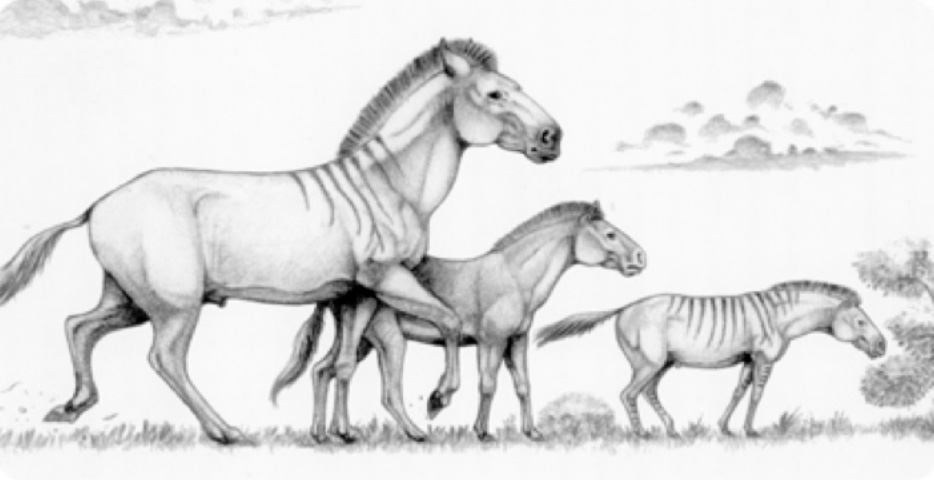Hipparions, the classical three-toed horses, repeatedly evolved dwarf forms, some of them as small as medium-sized dogs. Such size shifts are not unusual amongst insular mammals (fossil and extant), but they are less frequent in continental settings. Dwarfism on islands is commonly considered as a result of low resource availability directly limiting body size; however a more recent model by Palkovacs (2003) proposes that selection instead may act on key life cycle traits such as age at maturity or the age at first reproduction, and that shifts in body size are a simple byproduct. This approach has predictive power and enjoys empirical support. It allows a better understanding of the environmental conditions as it predicts the magnitude of selection pressure exerted by either predation or resource availability.
We adopted this approach to predict the paleoenvironment of continental dwarf hipparions from Eastern and Western Mediterranian bioprovinces, where the ecological conditions are still heavily debated. We reconstructed growth rates from bone histology for different-sized hipparionins from Greece and Spain, and found that dwarfing was triggered by different mechanisms in these regions. While Greek hipparions ceased growth early at a small size, thus advancing maturity, Spanish hipparions grew at slower rates and matured later, however at a similar small size. Based on Palkovacs’ model, we infer that the Greek dwarfs suffered high adult mortality by predation, while the Spanish dwarfs faced low resource supply associated with high juvenile mortality.
We conclude that different selective pressures – high predation pressure, low resource availability – trigger different changes in key life history traits (age at maturity) that result in similar shifts towards smaller size. Thus, there is no direct relation between observed body size and environmental conditions as hitherto believed, which calls for analyses within the framework of life history theory to resolve the mechanisms underlying size changes.
Reference
